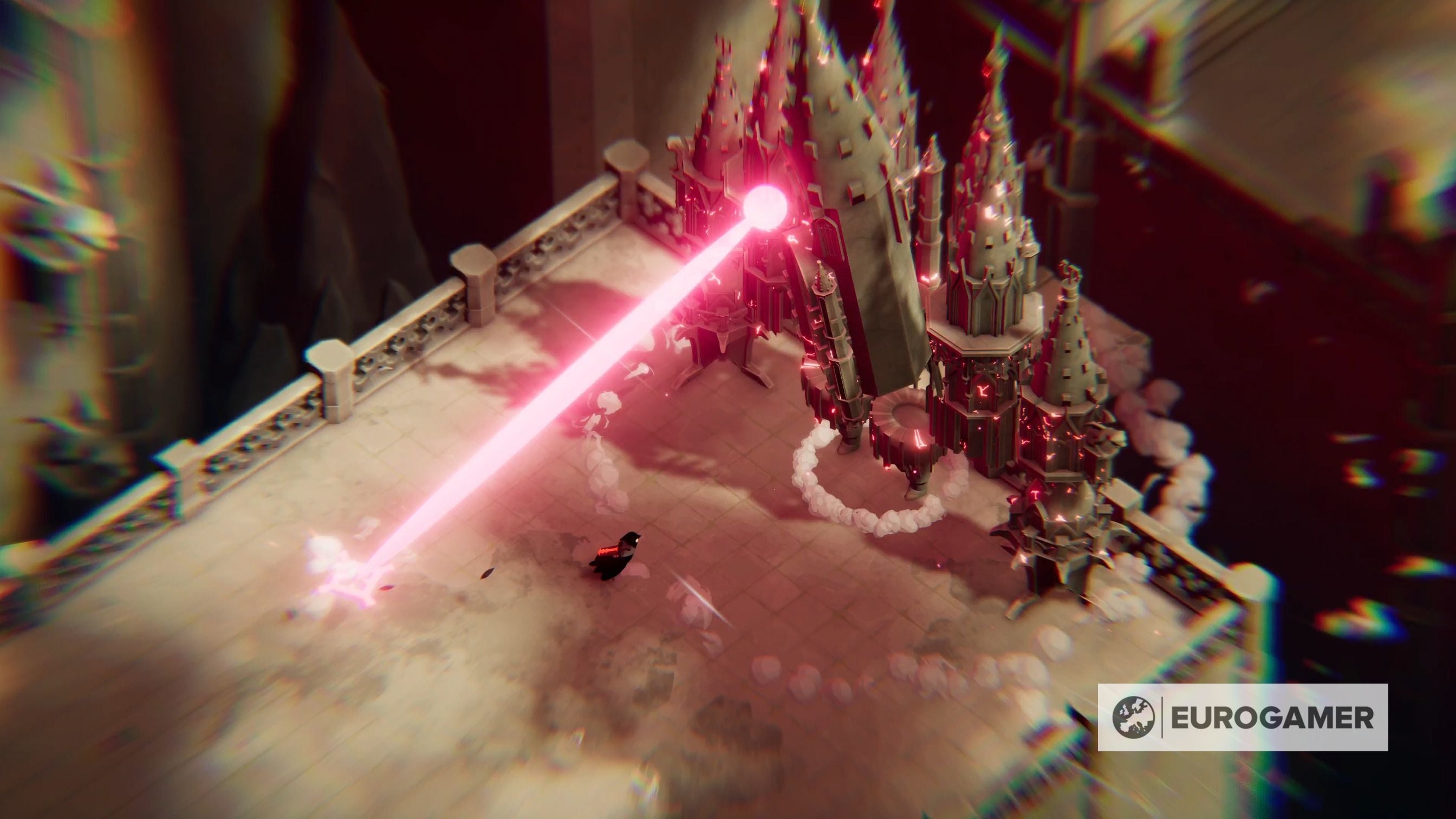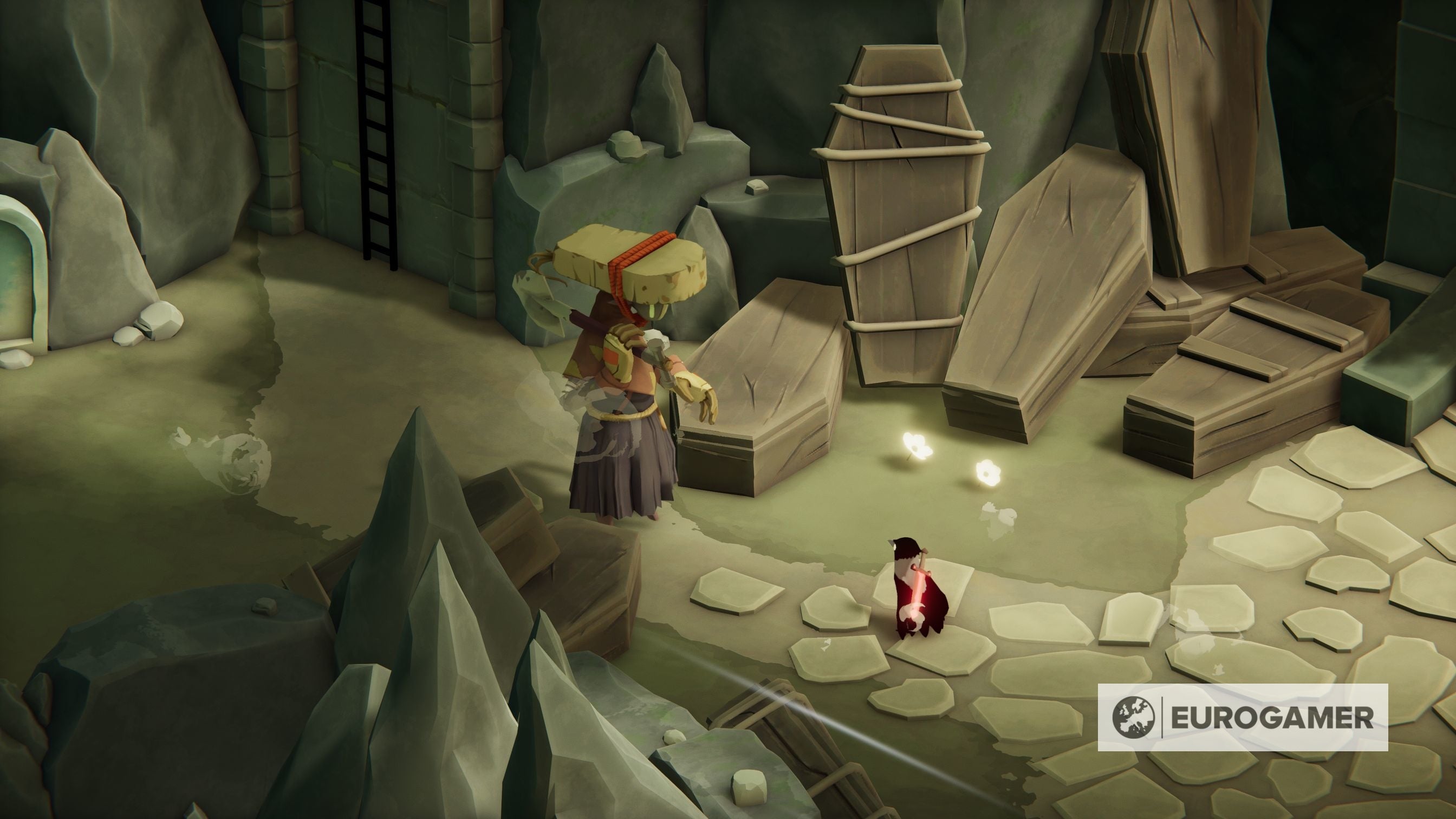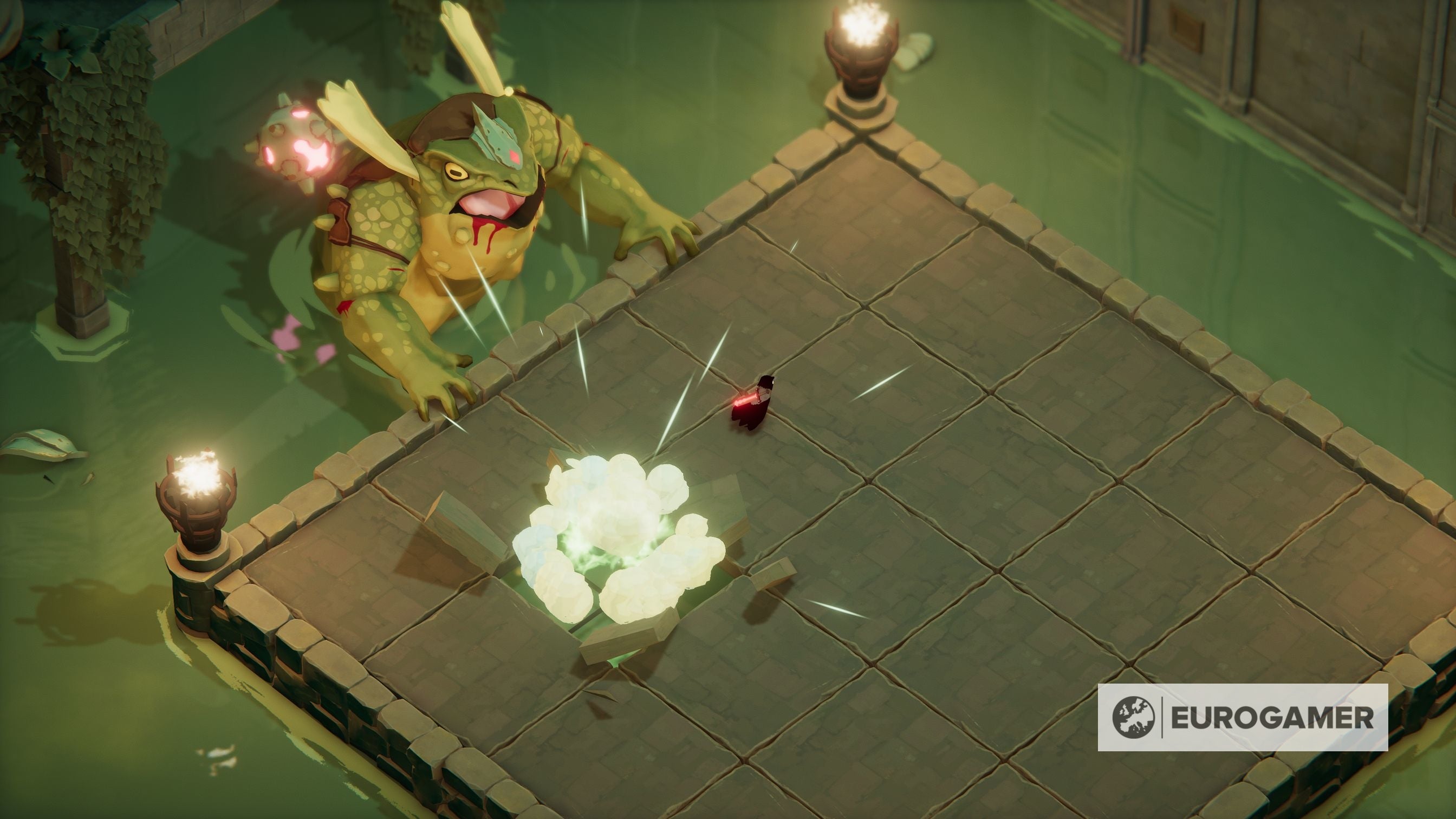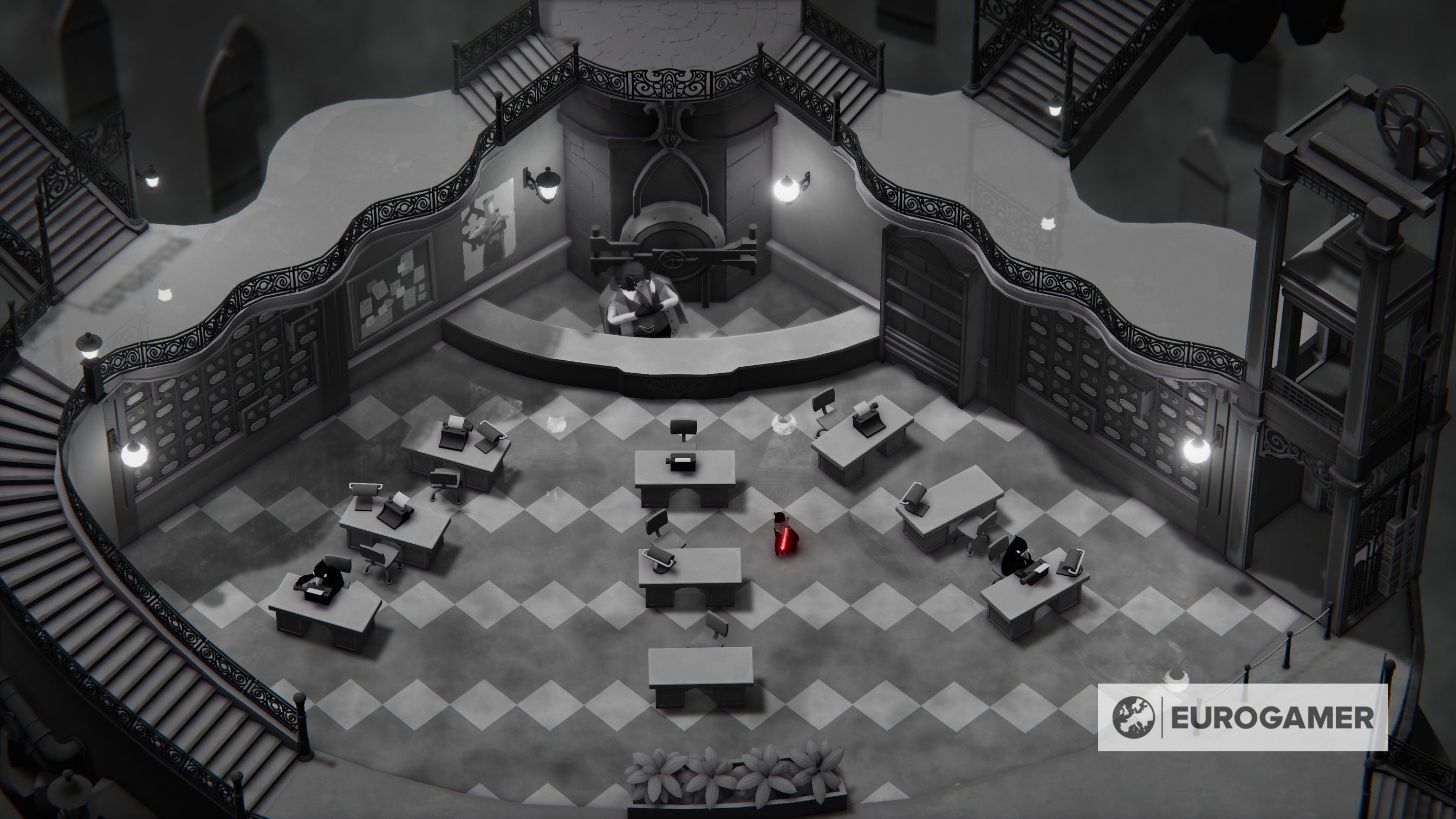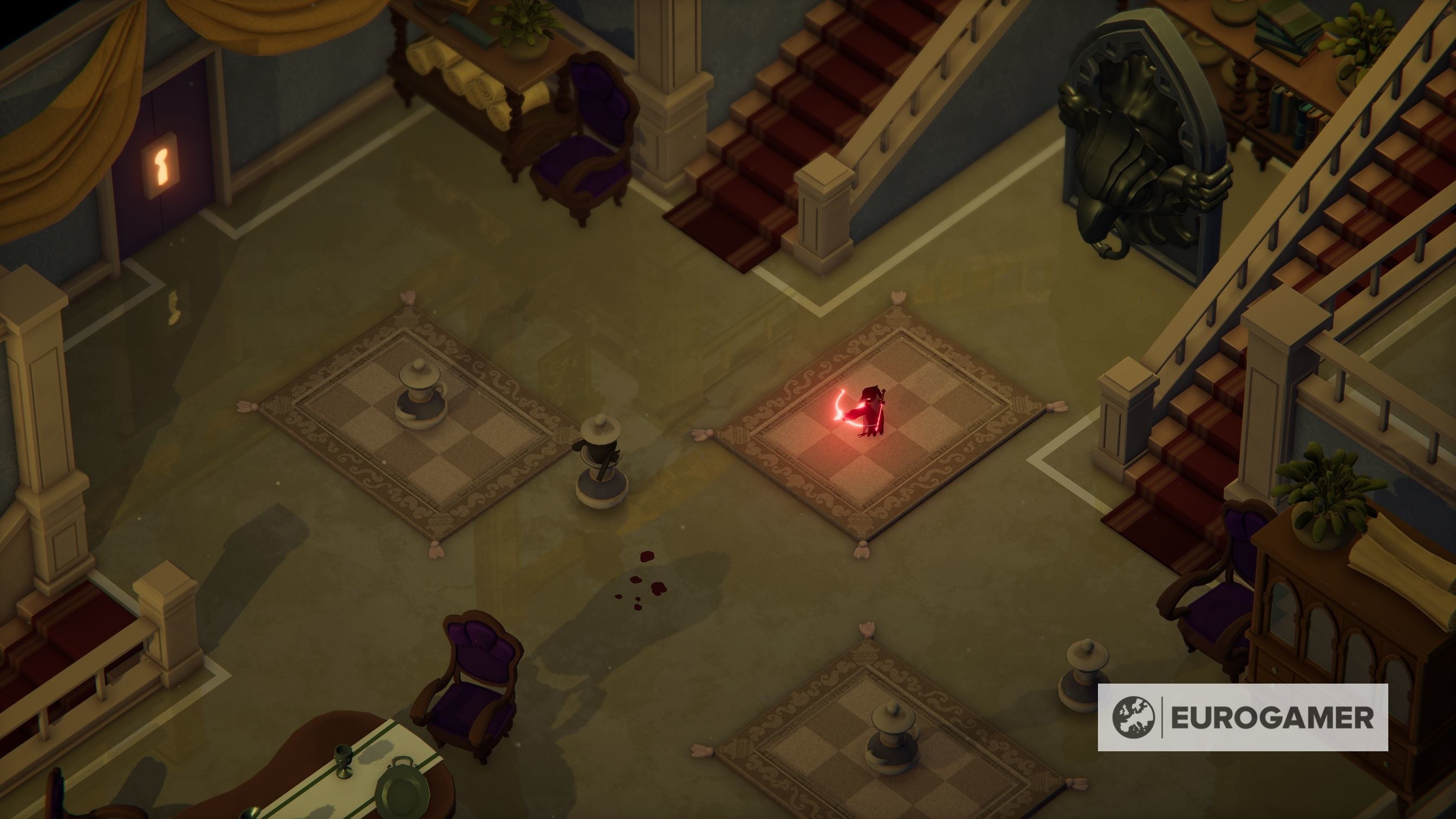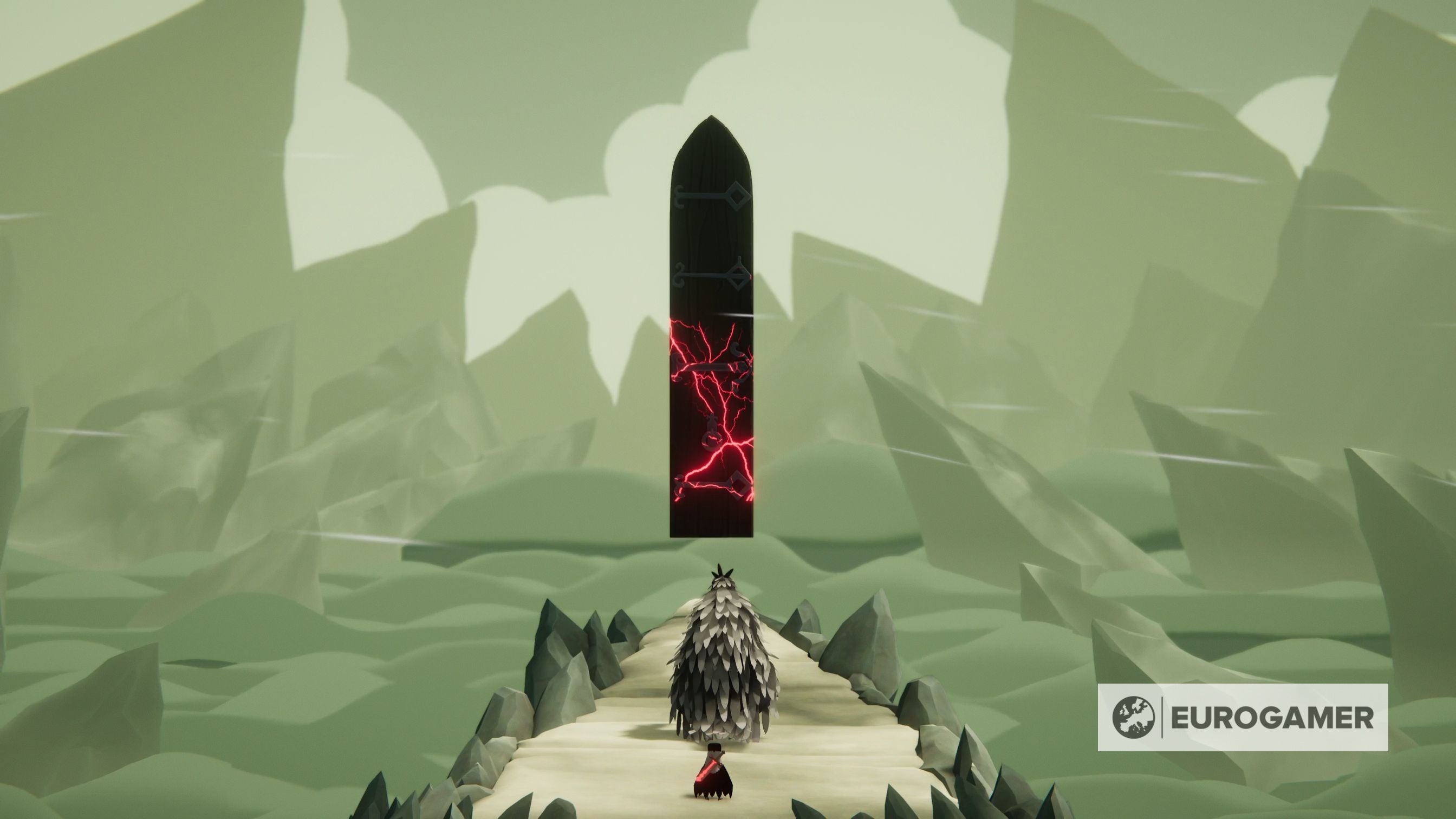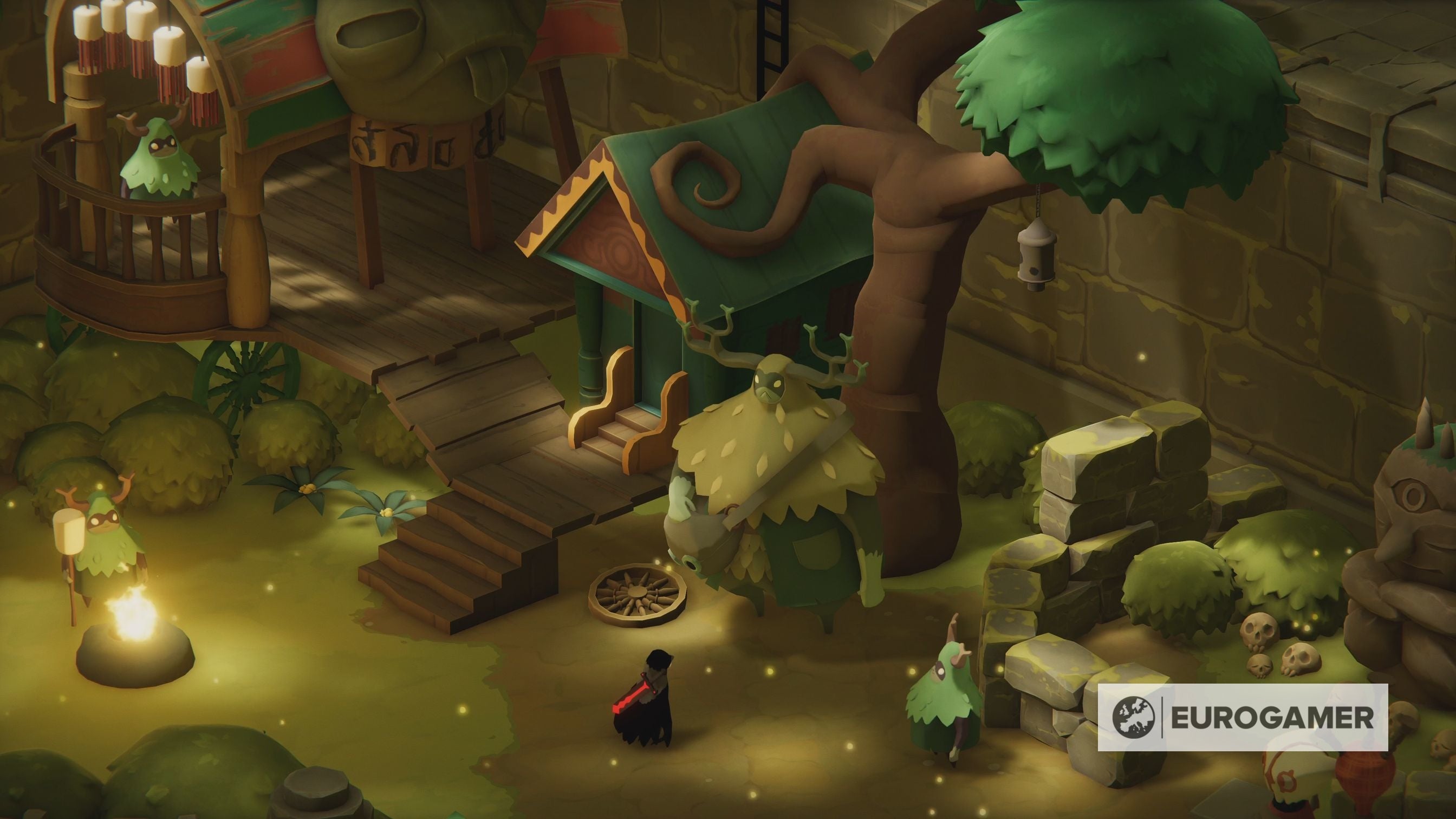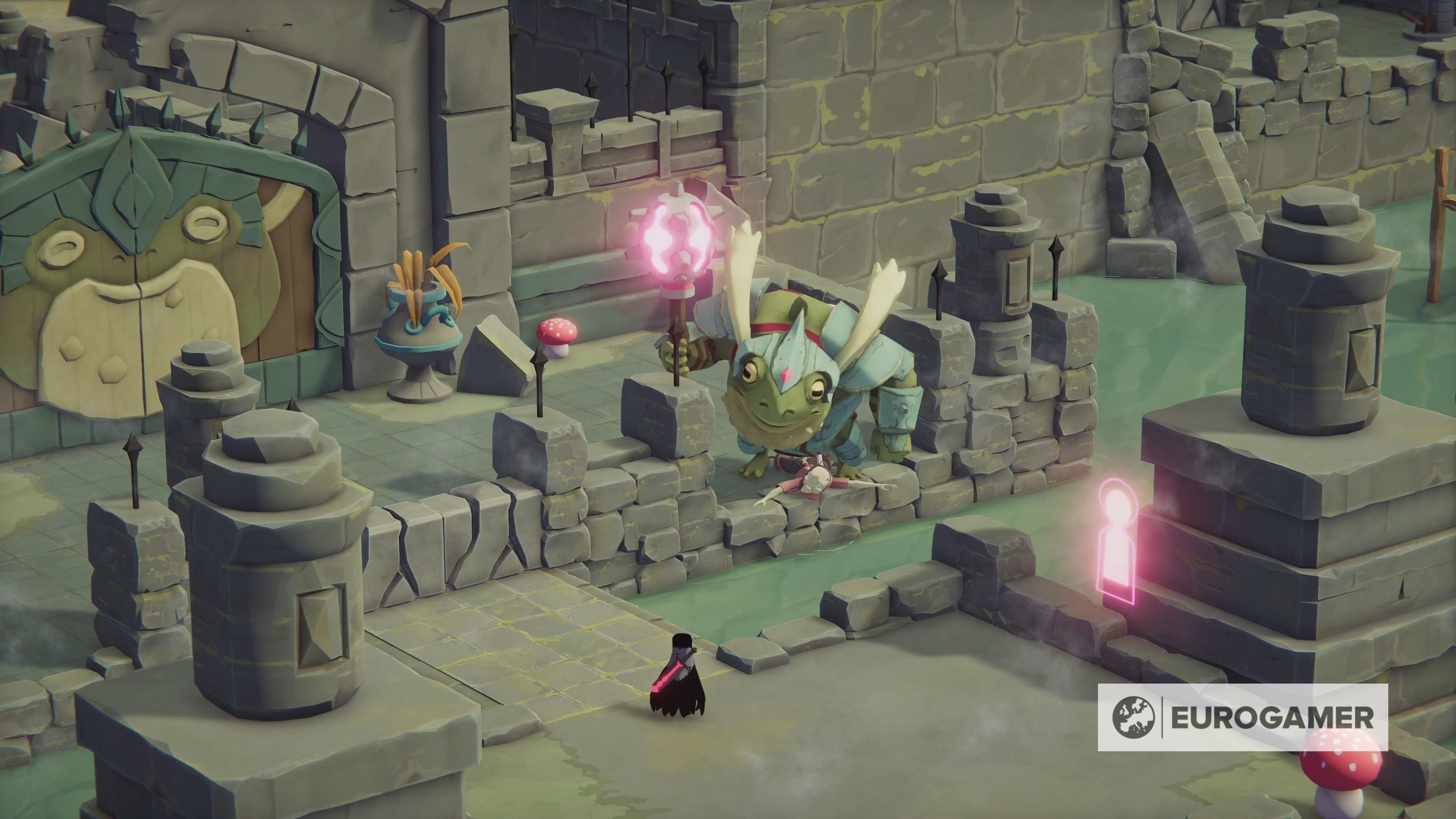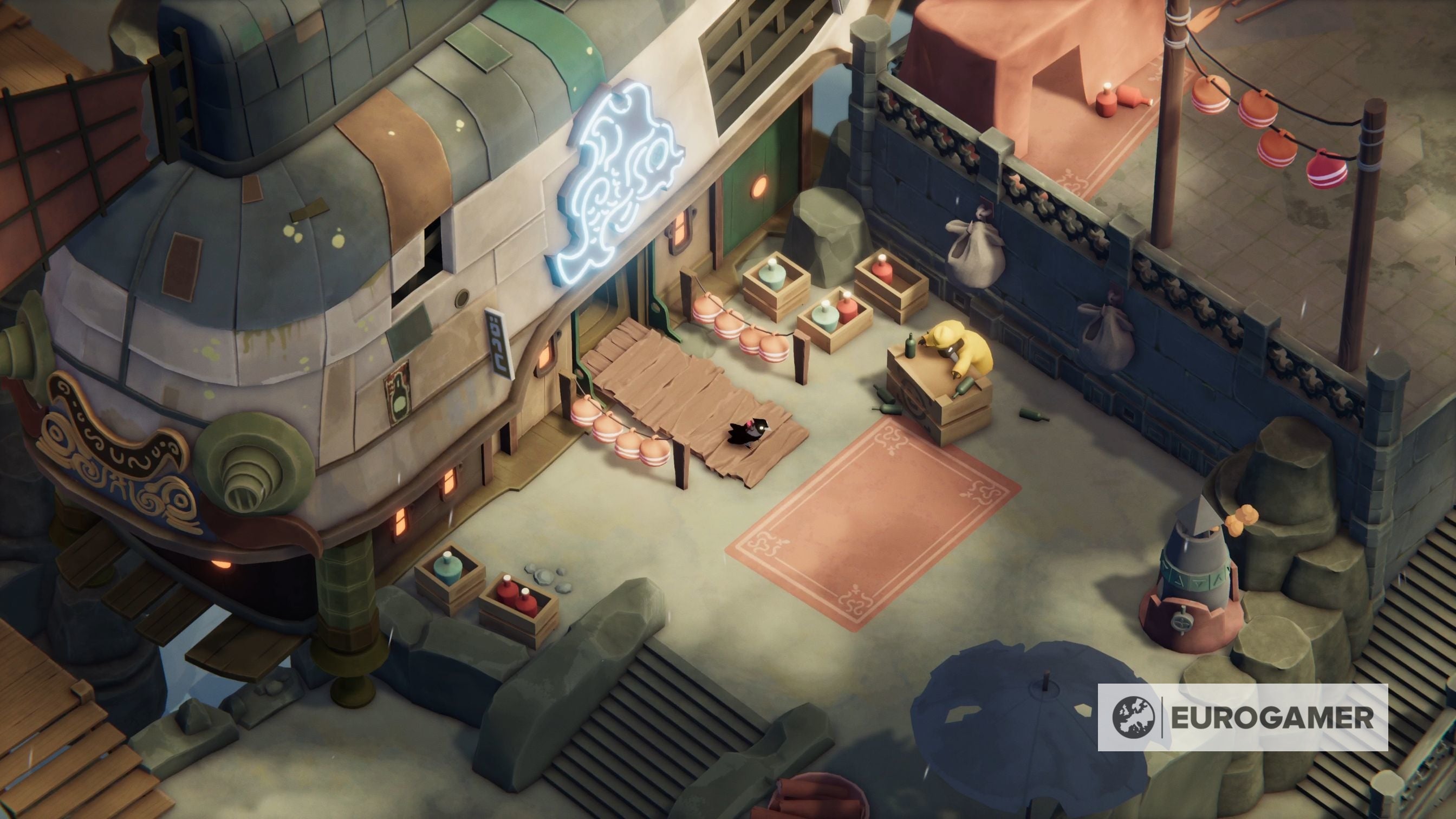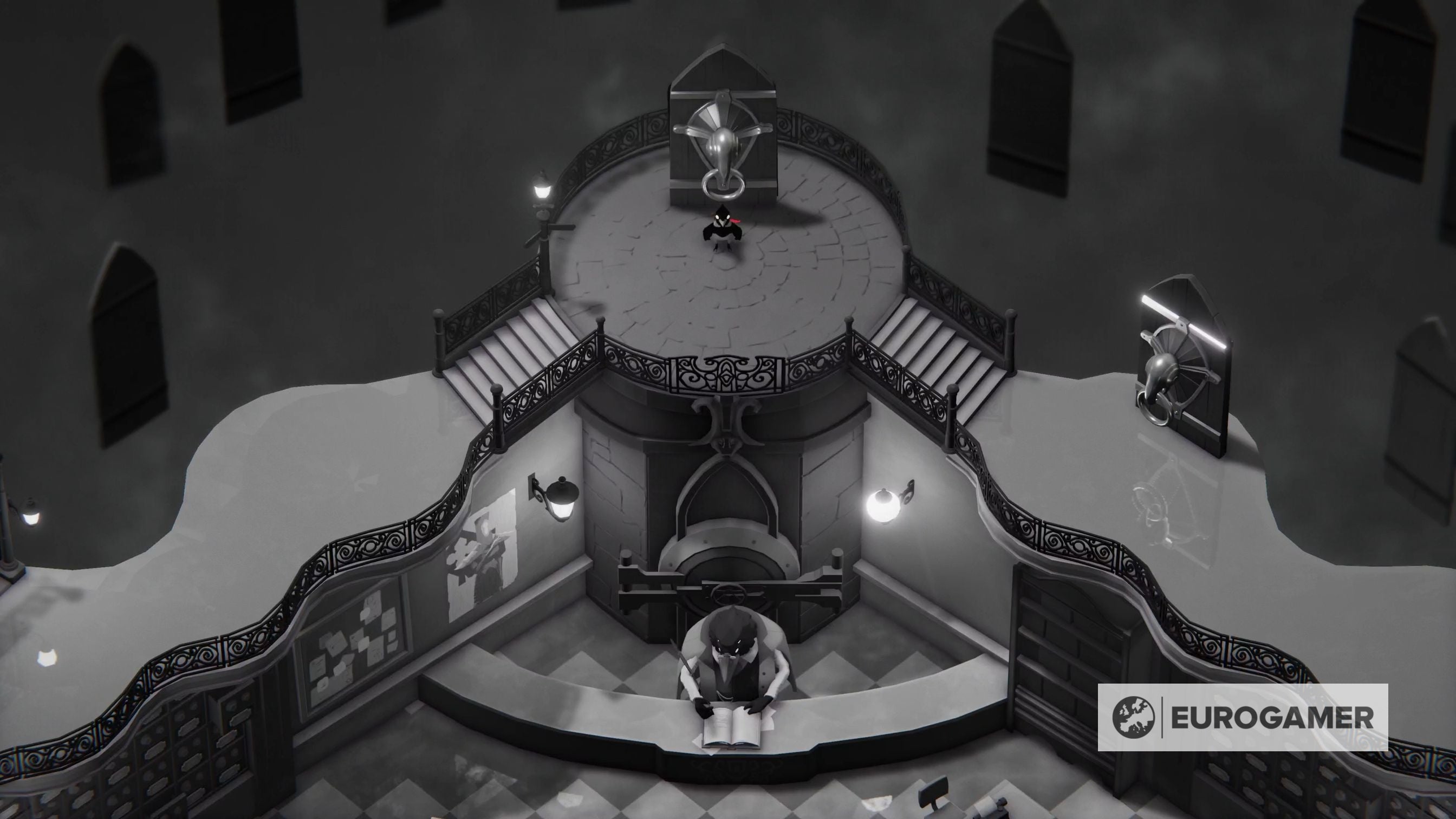The premise - not that this kind of spicy crow-on-chateau action needs much embellishment - is that the little bird is a reaper, who has to go about collecting souls from people in a world where people and things no longer naturally die. You report to some weary bureaucrats, also crows, who need to keep doing this soul-harvesting job to survive themselves, but then one day one of your big souls gets stolen, which is not good, and off you go: laser cathedral. Boss frog. Waves of gelatinous blobs and bubbling hazards in a weirdly touchable, gothic plasticine world. Its Titan Souls lineage seems clear, obviously in those structured, big-on-small boss fights, but also in the slightly mournful tone between the action (I saw a slightly different bit of footage to that one above, with a bit more of the combat - it looks very, very good). And yet Death’s Door is actually pretty different. “Kind of the opposite,” in fact, as fellow designer Mark Foster puts it. Titan Souls was built on a single, very specific idea: a game jam prompt of “you only get one” that gave what Fenn called a kind of “textbook indie elegance - where there’s really no words, there’s no UI, everything is like as efficient as minimal as possible.” Death’s Door is “kind of the same philosophy,” Foster says, “but more: what could we do with a formula?” It’s really a Zelda game: health points, sword-based combat, those gooey overworlds and what seem to be dungeons, an actual UI. The point here was for Acid Nerve to see what they could do within the walls of genre. “It’s been kind of liberating really,” Foster says, “because compared to Titan Souls especially, that was just really stripped back, really specific - there’s no room to ‘move around’ too much there. We kind of explored everything we could with the mechanics. Whereas with this, you could take that Zelda formula and do loads of different things with it: you could say Dark Souls is the derivative of Zelda or you could say Hyper Light Drifter is. We’ve taken that and just kind of put our own spin on it, and done what we thought would be cool with that formula here.” Fenn relished it - “I was just all for: Nah, let’s just do a proper game, let’s just give it an inventory, let’s give it a story where there can be characters that talk! I wanted to go for that this time round.” It’s also shifted the team’s emphasis, somewhat. “I think the core this time is not so much a mechanic, but the kind of ‘vibe’ of this world that we’ve created,” Fenn adds. “We put a lot of work into the setting and making it unique and distinctive, and having this very consistent vibe where it’s a nice contrast between dark and sinister stuff, but also humour and cute, endearing characters - for me I think that’s the core of what we’re going for this time, rather than a mechanical core.” “There was definitely still a process of figuring out how our structure fit in with that ‘Zelda foundation’,” he says. “So it’s not like: there’s eight dungeons that you have to get eight magical things from to beat a boss or something like that. We still put a lot of thought into the way that our game is structured and the way that it has a mix between self-directed exploration, but also, at the key moments, then it tells you the story we want to tell you. There’s still an element of our own unique structure that we’ve added to it.” The team’s also expanded, slightly, from Titan Souls’ development, with a shift from 2D to 3D the most obvious change. “With Titan Souls we just had one artist who’d draw all the pixel art, and the 3D aspects of it I actually modelled myself,” Foster explains. “But they were all ‘hacky’ kinds of things - whereas this process has been: we have a concept artist draw a thing, and then we get a modeller to model it,” and so on. “It’s a more involved process, but it’s been quite fun, I think.” They’ve been working on it since 2017, or thereabouts, tinkering with ideas around travelling through doors. “At some point, Mark sent me this prototype where it was like a sword-wielding crow, and we’re just like ‘yeah, this is it, we’ve got it now,” Fenn laughs. “We just wanted to do stuff that was always a little bit surreal,” he says. “The other artist we brought on just sent us loads of sketches, and one of them was this walking cathedral, and we’re just like: Yep, that’s going in.” The fun shows, in other words. It is surreal, watching a bird beat up a house, but it is also quite exciting. Acid Nerve is extremely good at this sort of thing - we know this from Titan Souls, but also from the deliberateness to it, the way Fenn and Foster talk about it. And now they’ve expanded on it, turned it on its head, build it into this world of extremely tactile-looking, tactile-sounding character, and I would really like to play it.
